By Tom Demerly
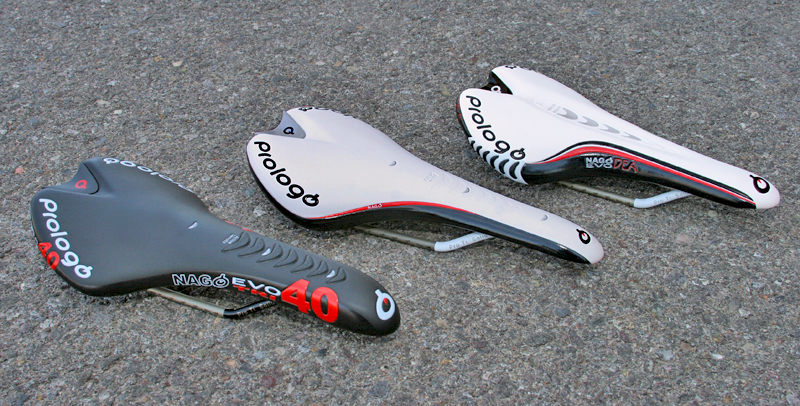
Last week long time triathlete and industry insider Emilio De Soto told me he’d only ever owned two bike saddles.
There are two types of saddle customers: The kind like Emilio De Soto, who fit their bikes meticulously and have excellent fitness, no extra weight and good saddle acclimation. Then the larger group- the group that entered our sport in the last 15 years and tried many different saddles in the search for saddle “comfort”.
Prologo saddles are for the first group- the group like De Soto who have good fitness and saddle comfort habits. Prologo makes professional grade saddles.
If you are saddle-acclimated, wear good shorts, are fit, have a good bike position and a couple years of saddle time you are a performance saddle customer. You can likely ride any saddle if it is set up correctly, but some saddles may offer subtle (and not so subtle, in one case) performance advantages such as weight, long duration comfort and even minor improvements in pedaling. There is a reason why, if you look at the saddles used at the highest levels of Ironman and in the Tour de France, they are all similar in shape and size. The designs become consensus, the differences very small.
Prologo Saddles is an Italian company. The bicycle saddle makers craft is revered in Italy, as is a penchant for style and technology. Prologo includes aspects of each in their designs.
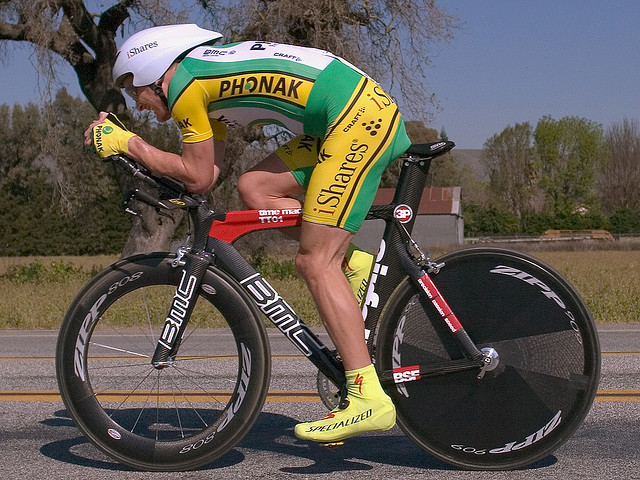
The company joins several other manufacturers in breaking their product line into three high level profiles called “Flat”, “Semi Round” and “Round”. From these categories individual models break out with specific features and benefits. With Prologo, the detail built into each saddle to accommodate everything from pedaling style to pelvic width, flexibility and angle on the saddle is impressive. When you look at the saddles the design looks basic, but there is an enormous amount of comfort technology built into Prologo Saddles.
“…the design looks basic, but there is an enormous amount of comfort technology built into Prologo Saddles.”
Technologies unique to Prologo are their “Active Density”, “Active Shape”, “Multisize”, “Slide Control”, “ESD” or “Easy Stroke Design”, “Base Tech” and the technology built into their rails. It is more than just buzz word heaven, it is subtle attention to detail that makes a tangible difference at hour 4 of a 5 hour ride.
I reviewed the Prologo Nago Evo TRI40 Slide Control triathlon saddle and the Nago Evo road saddle.
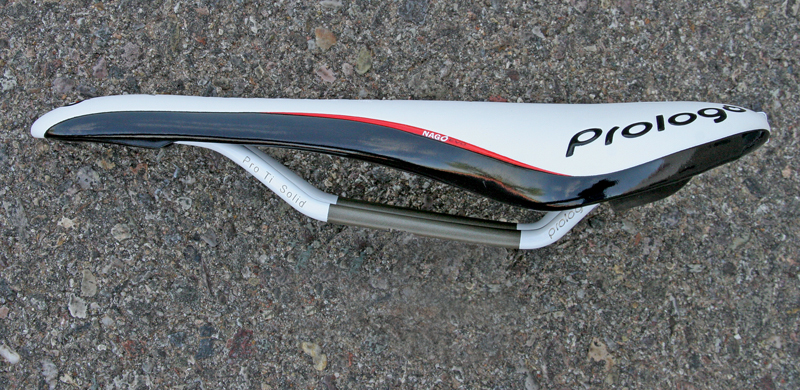
Prologo Nago Evo Ti
The Nago Evo initially struck me as a largely uninspiring road saddle. I was attracted by its flat profile, something I favor in my two all time saddle favorites- John Cobb’s excellent Cobb Cycling HC170 and the Fizik Arione in both road and tri versions. I was put off by its price at nearly $200. What didn’t meet the eye was features like tuned “Active” density foam over the saddle shell. This helps distribute saddle pressure by supporting heavier contact points with denser foam- increasing surface area to distribute load. Another feature of Prologo is the saddle shape. If you have ever owned a saddle that chafed or felt too wide in the nose the Active Shape design on the Prologo saddles is built to prevent your legs from rubbing the saddle while pedaling.
How does it Feel?
The Nago Evo feels like a more comfortable version of a high performance racing saddle. If you ever experienced Selle Italia’s brutal SLR series this saddle lives at the opposite end of the “Man Wrecker” spectrum.
On the drops and on the hoods the Nago Evo soaked up road vibration and reduced pressure better than any conventional road saddle I’ve tried. It’s worth mentioning this saddle is 27.5 centimeters long, shorter than my other favorite saddles at 30 cm for the Fizik Arione. That is significant since the Arione achieves comfort partially by having a longer “sling” or suspended center section to provide a more forgiving ride. The Nago Evo does this at a shorter length, making out of the saddle efforts easier since the saddle no longer bangs your inner thighs the way the longer Fizik Arione does.
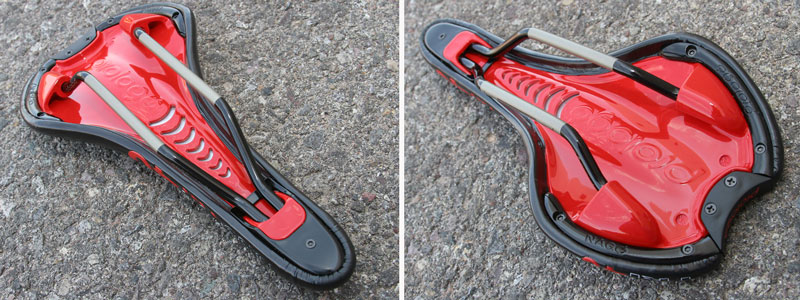
When you flip the saddle over you notice a series of slots in the saddle shell that help manage flex. Fizik uses a similar design on the sides of their saddles but the Prologo approach is more lively and influences saddle feel more. It’s an idea that works, especially in the third and fourth hour of a five hour ride.

Speaking of thighs I have some big ones. The Active Shape concept does, indeed, work as advertised. You don’t chafe on this saddle and the pedal stroke is free and open if your saddle fore/aft adjustment is correct. With this unique shape the saddle can be run slightly farther forward also without thigh interference. This is a worthwhile feature for a triathlete who uses their road bike for occasional rides.
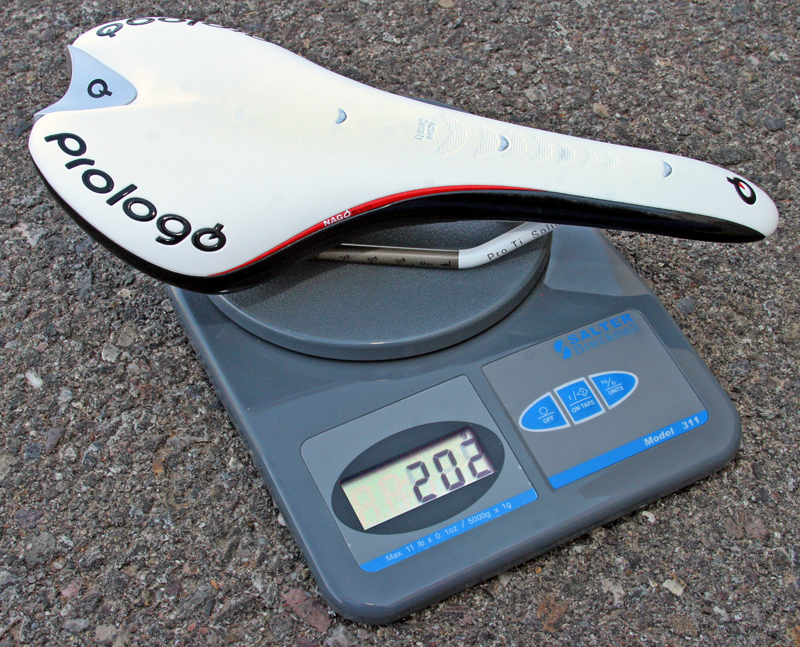
Weight on the Prologo Nago Evo is advertised at 197 grams and tipped our scale at 202 grams actual weight. Given the level of comfort, this is a light saddle. I particularly like the solid titanium rail assembly, a one-piece chassis that supports the saddle frame and works with any seat post. It is a practical alternative to finicky 7X9 carbon fiber saddle rails that don’t fit every seatpost clamp.
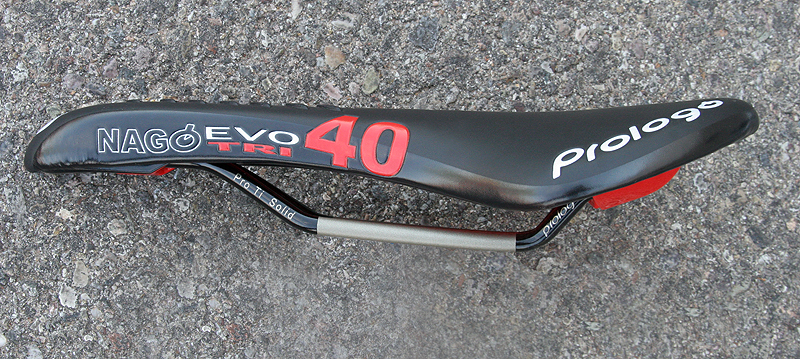
Prologo Nago Evo TRI40 Slide Control.
This is the saddle that got me interested in Prologo saddles. Dave Koesel, Road Brand Manager at Felt Bicycles, showed me the saddle some time ago and told me it would “revolutionize” the way I rode a tri bike. A Prologo Slide Control Saddle is used on Felt’s flagship DA triathlon bike.

The common issue with tri bike fit and position is sliding forward in the aero posture under heavy efforts. The problem is so common among top time trial riders in professional cycling races they’ve taken to installing strips of adhesive sandpaper-like grip tape to the tops of their saddles to prevent them from sliding forward. Bicycle racers are constrained by UCI rules that mandate the position of their saddles relative to their bottom bracket- these guys can’t push their saddles forward- it’s against the rules. So, they had to improvise by using the sandpaper grip tape.

Prologo’s solution to the sliding forward issue is “Slide Control”, a series of shark-gill shaped protrusions on the nose of the saddle that, at first glance, make most men go a little pale. It doesn’t look comfortable, and it probably wouldn’t be if it weren’t combined with the variable density foam padding and the broad, flat shape of the Prologo Nago Evo TRI40’s nose. Those features make this saddle a totally functional nose-riding saddle even in skimpy tri shorts.
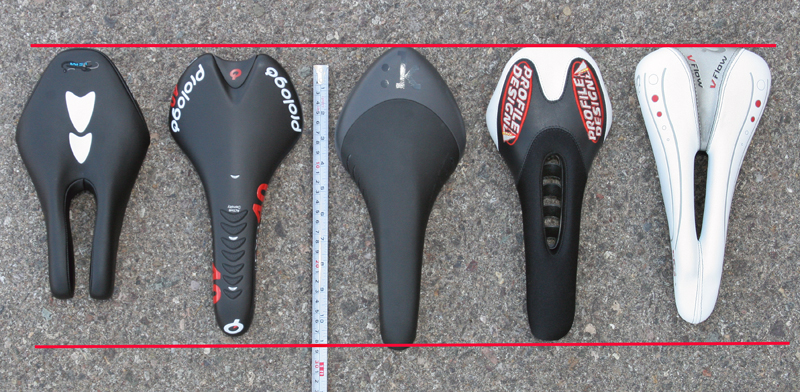
I first rode the Nago Evo TRI40 Slide Control on a new Felt DA. I was amazed at how well the slide control actually trapped your crotch on the nose of the saddle. You can slide back on the saddle, but to move forward you really have to rise up, off the saddle. Under hard efforts it’s like wearing a Velcro seatbelt that holds your crotch on the saddle. Since you don’t slide forward you can pull up and back on the pedals more attentively. This feels more powerful. Finally, the thing that impressed me with the Nago Evo TRI40 was no hot spots while sitting with crotch planted on the nose going hard.

If I’m allowed one solitary beef about this chair it is the width, which is about as wide as I’d ever be able to manage the nose of a saddle. Luckily the sides of the saddle are vertical and wrap underneath well so, while the inner part of my thighs did rub somewhat, there isn’t anything on the side of the saddle to tear your shorts or thighs up.
With tri shorts on the Nago Evo TRI40 slide control was still tolerable, but I wasn’t on it very long so I’d reserve final judgment for a longer ride.

Saddles tend to fall into two categories: The classic cycling saddles from Italian makers like Fizik, Selle San Marco, Selle Italia and others and the new-age saddles with holes, horns, gel and other novelties. Riders with lots of saddle time lean toward the former category, numb and saddle sore newer rides embrace the latter category. Prologo is a valid and current entry into the former category. They take on companies with as much as a century or more of experience, and they are taking them to task with valid technologies and new ideas in how to improve comfort with the rider/saddle interface and, in the case of the Nago Evo TRI40 slide control, even improving (at least) perceived performance.
I’ve added these two Prologo Saddles to my list of saddle favorites since they bring new ideas to a traditional category and, in these two cases, I’ll suggest the ideas really work.
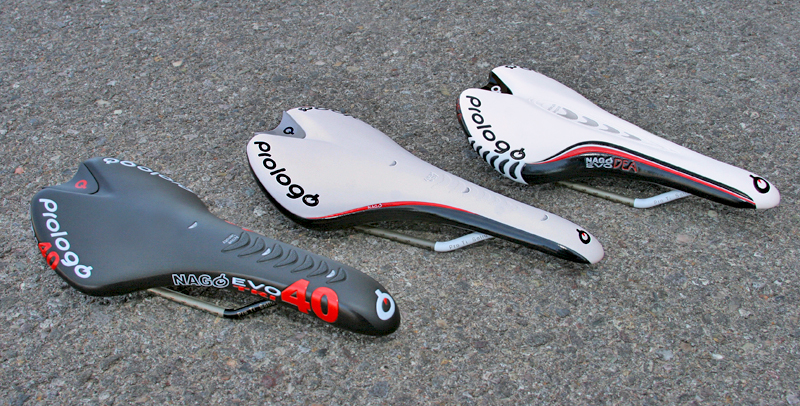
Like it! Tweet it! Share it!
